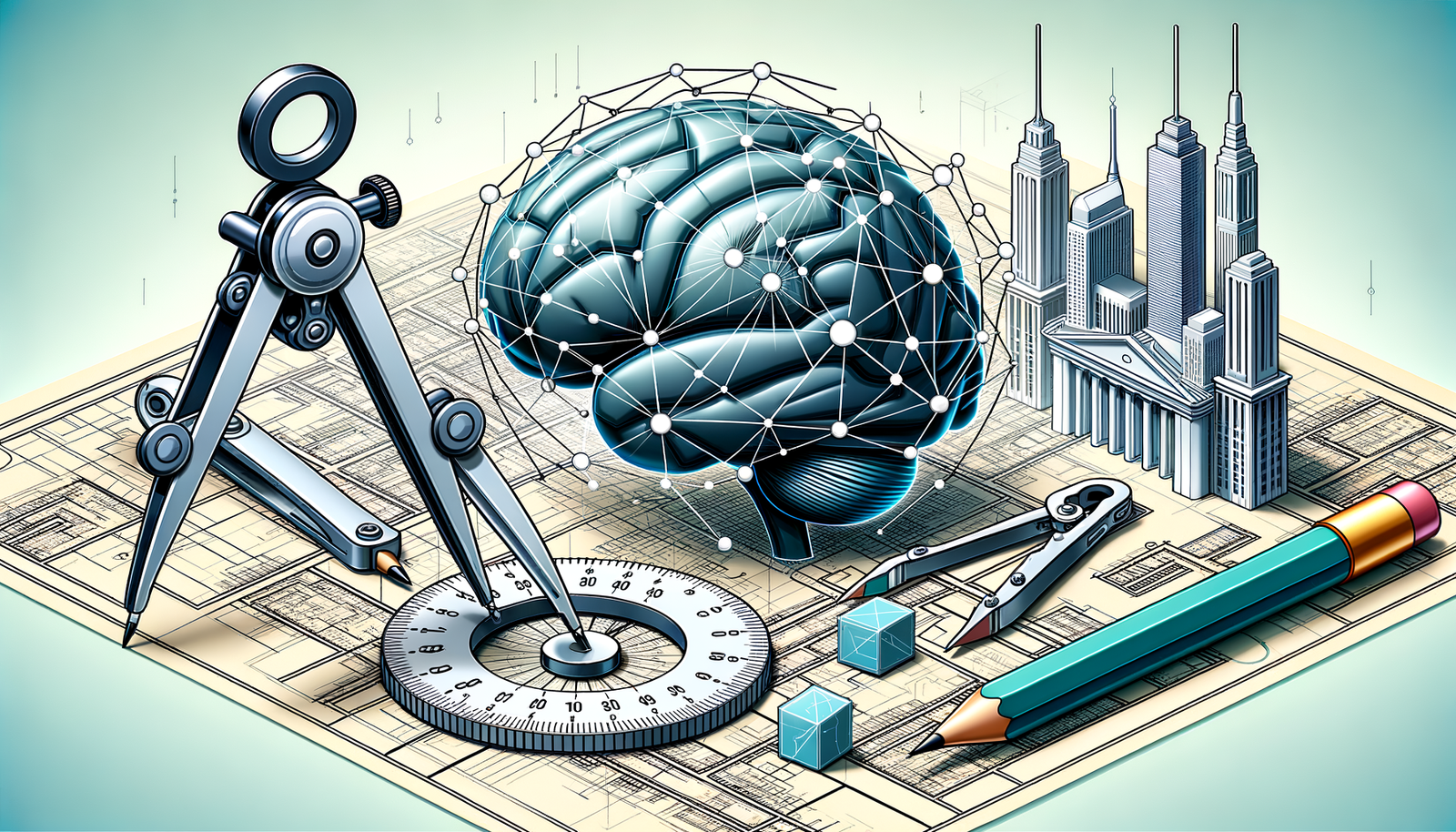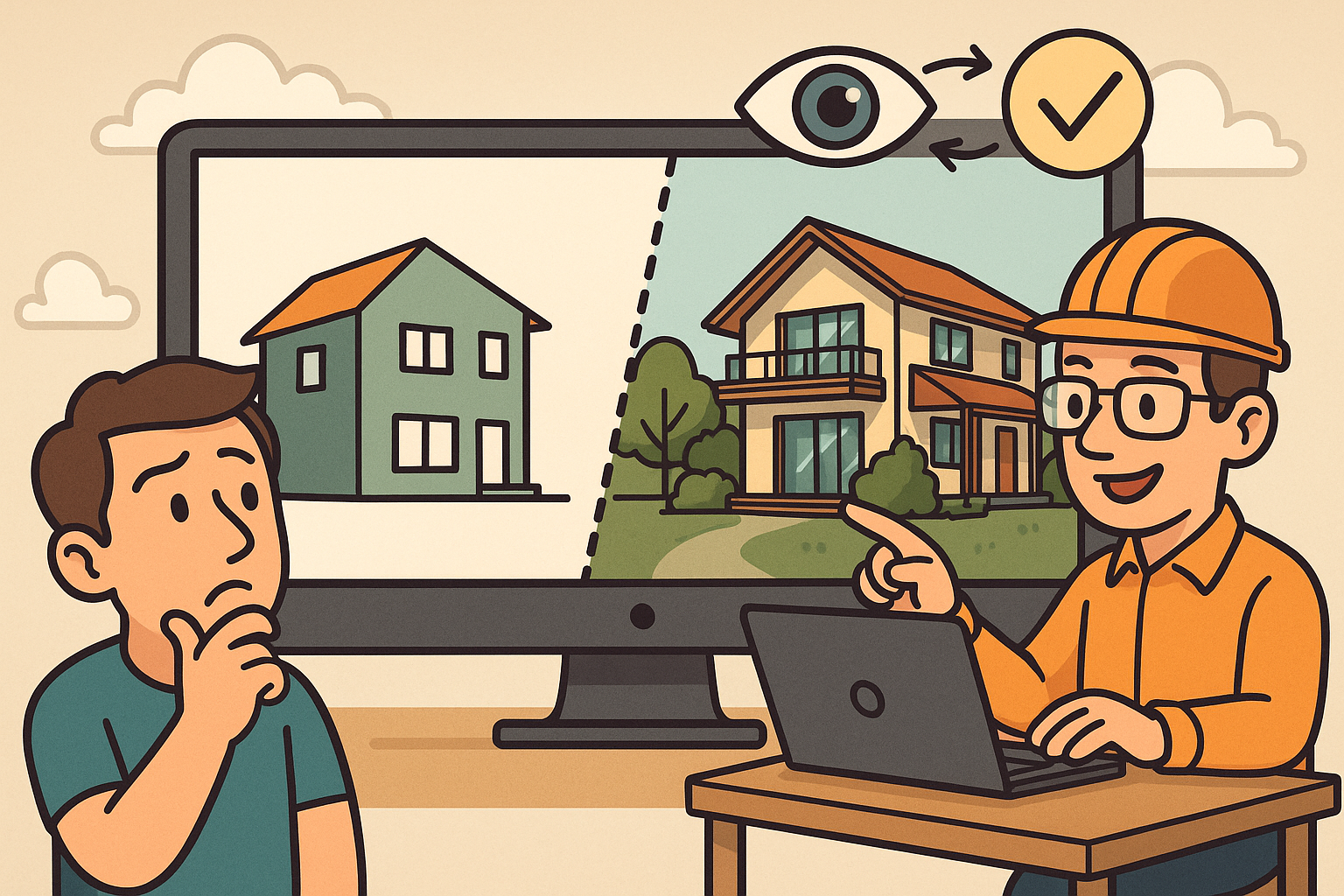Your Cart is Empty
Customer Testimonials
-
"Great customer service. The folks at Novedge were super helpful in navigating a somewhat complicated order including software upgrades and serial numbers in various stages of inactivity. They were friendly and helpful throughout the process.."
Ruben Ruckmark
"Quick & very helpful. We have been using Novedge for years and are very happy with their quick service when we need to make a purchase and excellent support resolving any issues."
Will Woodson
"Scott is the best. He reminds me about subscriptions dates, guides me in the correct direction for updates. He always responds promptly to me. He is literally the reason I continue to work with Novedge and will do so in the future."
Edward Mchugh
"Calvin Lok is “the man”. After my purchase of Sketchup 2021, he called me and provided step-by-step instructions to ease me through difficulties I was having with the setup of my new software."
Mike Borzage
Harnessing AI for Advanced Parametric Design Optimization: Challenges, Benefits, and Future Directions
November 13, 2024 7 min read


Introduction to AI in Parametric Design Optimization
Parametric design has revolutionized the way designers approach problem-solving in architecture, engineering, and various fields. By leveraging parameters—quantifiable elements that define and constrain a system—designers can create adaptable and responsive models that adjust to varying requirements. This methodology allows for the exploration of a vast design space, enabling the optimization of forms and functions that meet specific performance criteria. In contemporary design practices, parametric design is significant because it fosters innovation, efficiency, and precision. It empowers designers to experiment with complex geometries and dynamic systems, pushing the boundaries of what is possible in the built environment. As projects become more intricate and demands for customization increase, parametric design serves as a crucial tool for addressing these challenges effectively.
Artificial Intelligence (AI) introduces a transformative potential to design optimization by augmenting the capabilities of parametric design. AI encompasses a range of computational techniques that enable machines to perform tasks that typically require human intelligence, such as learning, reasoning, and problem-solving. In the context of design, AI can process vast amounts of data, recognize patterns, and make predictive analyses that inform decision-making. The potential impact of AI on design optimization is profound, as it can enhance the efficiency and effectiveness of the design process. By integrating AI into parametric design, designers can automate routine tasks, explore more design variations, and derive insights that may not be apparent through traditional methods.
AI enhances decision-making in parametric design by providing intelligent tools that support the exploration and evaluation of design options. Through machine learning algorithms, AI systems can analyze design parameters and performance outcomes to identify optimal solutions. This capability allows for a more informed and data-driven approach to design, where decisions are based on empirical evidence rather than intuition alone. By leveraging AI, designers can address complex problems with greater confidence, ensuring that the final designs meet or exceed the desired criteria. The collaboration between AI and parametric design signifies a shift towards more advanced and sophisticated design practices, where technology and creativity converge to produce innovative outcomes.
Mechanics of AI-Driven Parametric Optimization
AI algorithms work in tandem with parametric design tools by augmenting the design process with computational intelligence. Parametric design relies on the manipulation of parameters to generate design variations, and AI enhances this process by efficiently navigating the vast design space to identify optimal solutions. The AI algorithms employ optimization techniques that can handle multiple objectives and constraints simultaneously, providing designers with a set of solutions that balance various performance criteria. This integration enables a more thorough exploration of design possibilities than what is achievable manually, as AI can process and analyze complex data at unprecedented speeds.
Generative design principles are central to AI-driven parametric optimization. Generative design uses algorithms to autonomously generate a wide array of design options based on defined goals and constraints. These principles allow the creation of innovative and unconventional designs that might not emerge through traditional design methods. Applications of generative design span across industries, including architecture, automotive, aerospace, and product design. For example, in architecture, generative design can optimize building layouts for energy efficiency, structural performance, and spatial quality. By automating the generation of design options, designers can focus on evaluating and refining the most promising solutions.
Machine learning techniques are utilized for optimization within AI-driven parametric design. These techniques enable the system to learn from data and improve its performance over time. Common machine learning methods applied in design optimization include:
- Supervised Learning: Where the AI model learns from labeled datasets, making predictions or classifications based on input parameters.
- Unsupervised Learning: Which involves finding patterns or groupings in data without predefined labels, useful for exploratory analysis of design spaces.
- Reinforcement Learning: Where the AI learns optimal strategies through trial and error, receiving rewards or penalties based on its actions, ideal for navigating complex optimization problems.
These machine learning techniques enable the AI to handle nonlinear and multidimensional optimization challenges inherent in parametric design. By continuously learning from the data and feedback, the AI system refines its predictions and recommendations, leading to improved design outcomes. The synergy between AI algorithms and parametric design tools results in a powerful platform for innovation, allowing for the efficient exploration of complex design spaces and the identification of solutions that meet or surpass project goals.
Benefits and Challenges of Implementing AI in Parametric Design
Implementing AI in parametric design offers numerous advantages that enhance the overall efficiency and quality of the design process. One of the most significant benefits is the increased efficiency and reduced time in developing design solutions. AI algorithms can rapidly process and analyze large datasets, enabling the quick generation and evaluation of multiple design options. This acceleration of the design process allows designers to iterate more frequently and explore a broader range of possibilities within tight project timelines. By automating routine and computationally intensive tasks, AI frees designers to focus on higher-level creative and strategic aspects of their work.
Another advantage is the improved accuracy and performance of design outcomes. AI's ability to handle complex calculations and optimization tasks leads to designs that are more precisely tuned to meet specified performance criteria. Whether optimizing for structural integrity, material efficiency, or environmental sustainability, AI-driven tools can identify solutions that achieve optimal balances between competing objectives. This level of precision reduces the likelihood of errors and the need for costly revisions later in the project. Moreover, AI can uncover innovative solutions that may not be immediately apparent, pushing the boundaries of traditional design paradigms.
However, the implementation of AI in parametric design also presents challenges and limitations. One of the primary concerns is data dependency and quality issues. AI systems rely heavily on large quantities of data to function effectively. The quality of the input data significantly impacts the accuracy and reliability of the AI's outputs. Incomplete, biased, or inaccurate data can lead to suboptimal or flawed design recommendations. Ensuring data quality requires meticulous data collection, cleaning, and management processes, which can be resource-intensive. Additionally, there are concerns about data security and privacy, particularly when dealing with sensitive or proprietary information.
Another challenge is balancing automation with creative design processes. While AI can automate many aspects of design optimization, there is a risk that over-reliance on automation could diminish the human element of creativity and innovation. Design is inherently a creative endeavor, requiring intuition, subjective judgment, and an understanding of cultural and social contexts. Ensuring that AI serves as a tool to augment rather than replace human creativity is essential. Designers must remain actively engaged in the process, guiding the AI and interpreting its outputs within the broader project vision.
Addressing these challenges involves implementing strategies such as:
- Investing in data management systems to improve data quality and accessibility.
- Establishing ethical guidelines for AI use to protect data privacy and ensure responsible deployment.
- Promoting interdisciplinary collaboration between designers, data scientists, and AI specialists.
- Providing training and education to designers on AI tools and methodologies.
By carefully navigating the benefits and challenges, organizations can effectively integrate AI into parametric design practices, enhancing innovation while maintaining the essential human touch that defines exceptional design work.
Future Directions and Conclusions
The future of AI in parametric design is poised to be shaped by several emerging trends that will further transform the industry. One significant trend is the integration of AI with other advanced technologies, such as the Internet of Things (IoT), augmented reality (AR), and virtual reality (VR). These technologies can provide real-time data and immersive experiences that enhance the design process. For instance, IoT devices can supply continuous data streams that AI systems use to adjust designs dynamically, while AR and VR can enable designers to interact with AI-generated models in three-dimensional space, providing deeper insights and fostering collaboration.
Another emerging trend is the development of more sophisticated AI models that can handle increasingly complex tasks. Advances in deep learning and neural networks are expanding AI's capabilities to process unstructured data, understand context, and make nuanced decisions. This progression opens up possibilities for AI to take on more significant roles in conceptual design and early-stage ideation, areas traditionally dominated by human creativity. Moreover, the integration of AI with cloud computing and big data analytics will enhance scalability and accessibility, allowing organizations of all sizes to leverage AI-driven design optimization.
In this evolving landscape, the role of designers in a future AI-optimized environment will be crucial. Designers will need to adapt to new workflows where collaboration with AI systems is integral. Rather than viewing AI as a replacement, designers can see it as a partner that enhances their capabilities. This shift requires a mindset that embraces continuous learning and openness to new tools and methodologies. Designers will focus more on defining problems, setting goals, and making critical judgments that guide AI systems. Their expertise in understanding human needs, aesthetics, and ethical considerations remains irreplaceable.
In conclusion, the transformative potential of integrating AI in parametric design optimization is immense. AI stands to revolutionize how designs are conceived, developed, and executed, leading to more efficient, innovative, and high-performing outcomes. The implications for future design practices include a greater emphasis on data-driven decision-making, the ability to tackle more complex challenges, and the potential to create designs that are finely tuned to specific needs and contexts.
To harness these new possibilities, a collaborative approach between AI and human creativity is essential. Designers and AI specialists must work together to ensure that technology enhances rather than detracts from the human aspects of design. This partnership involves leveraging AI's strengths in computation and data analysis while relying on human intuition, empathy, and ethical judgment to guide the design process. By fostering this collaboration, the design community can push the boundaries of innovation and create solutions that not only meet technical specifications but also enrich human experiences and address societal challenges.
The call to action is clear: embrace the integration of AI as an opportunity to expand the horizons of design. By investing in education, fostering interdisciplinary collaboration, and prioritizing ethical considerations, designers can lead the way in shaping a future where AI and human creativity work hand in hand. This synergy has the potential to unlock unprecedented levels of innovation and redefine what is possible in the realm of design.
Also in Design News

Design Software History: From Computational Topology to Design Software: Integrating TDA into CAD, BIM and CAE Workflows
December 25, 2025 10 min read
Read More
Scene-Aware LOD: Perception-Driven Fidelity for Scalable Design Visualization
December 25, 2025 12 min read
Read More
Cinema 4D Tip: Hair-to-Spline Workflow for Stylized NPR Ribbons in Cinema 4D
December 25, 2025 2 min read
Read MoreSubscribe
Sign up to get the latest on sales, new releases and more …


